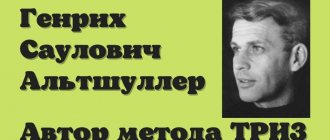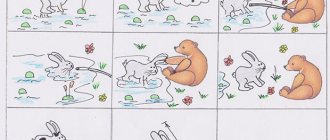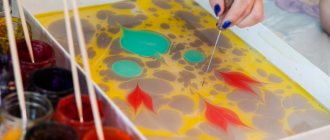The algorithm and its use in working with preschool children
Elena Belaya
The algorithm and its use in working with preschool children
The algorithm and its use in working with preschool children.
Teach a child some five words unknown to him - he will suffer for a long time and in vain, but associate twenty such words with pictures, and he will learn them on the fly" (K. D. Ushinsky)
.
Life in the modern world is filled with various signs, symbols, and patterns. Many of them are quite widespread. For example, most traffic signs are used in many countries around the world. The alphabet familiar to you and me is also a system of symbols that allows us to convey any information, like most alphabets, it is built on symbols (letters)
.
But there are written languages in the world, which are still based on the image of objects, phenomena, and actions with them, designed in the form of schematic pictures. Such pictures can be endowed with similarities to a real object. With the development of digital technologies, the process of transmitting information, including human feelings and emotions, sometimes turns into a demonstration of universal symbols that are understandable to people unfamiliar with each other and speaking different languages. For example, the well-known “emoticons”
.
But they do not carry any special meaning. It is rather a description, an expression of mood, attitude towards something. Pedagogical modeling, which is based on replacing objects and phenomena with conventional symbols, fulfills the task of developing thought processes, in particular, in preschool . I would like to dwell in more detail on one of the options for visual modeling, which is widely used in preschool educational institutions, starting from an early age - these are action algorithms . An algorithm is a sequence of steps, a way of accepting and maintaining the goal of an upcoming activity, it is an opportunity to transfer the method of solving a given problem to similar problems. From a very early age, children master algorithms and become familiar with the sequence of actions when performing hygiene procedures: washing, brushing teeth, using a scarf, getting dressed. An algorithm is an exact prescription about what actions and in what sequence must be performed in order to achieve a result in any task of a certain type; This task, consisting of commands, is always aimed at the performer . If you think through the commands correctly and execute them one after another without errors, then you can solve the problem. An algorithm is a clear and precise instruction (instruction) for the performer to perform a sequence of actions aimed at achieving a specified goal.
An analysis of the psychological and pedagogical prerequisites for the formation of algorithmic skills in preschool children showed that preschoolers of the second younger group are not yet capable of mastering algorithms , they cannot maintain the goal and plan of activity for a long time, accurately follow the model, instructions, the basics of algorithmic activity are still difficult for them . Therefore, at this age I carried out preparatory work to develop these skills. Under my guidance, in the process of play activities preschoolers mastered the norms and rules of behavior at the table during meals, rules of washing, cultural and hygienic skills for using personal hygiene items, that is, actions that are algorithmic in nature .
You can place your own action algorithms . Thus, make the environment diverse and interesting with algorithms , diagrams, signs, so that the child, studying them, develops and is involved independently in any type of activity. At the beginning, I introduced the children to the algorithm , spoke, explained, taught the children to “read algorithms ”
.
Then you can play out the progress individually or in a group with 2-3 children . In the future, the child himself acts according to the picture. In the dressing room you can establish a scheme for using a scarf and dressing in winter and summer. Thus, a lot of knowledge that a child cannot learn based on the teacher’s verbal explanation, he easily learns if this knowledge is given to him in the form of actions with models, and subsequently these same algorithms will act as faithful assistants in organizing independent activities.
Model and symbolic means allow the development of creative and cognitive abilities in preschoolers , and also contribute to the formation of independence and planning skills, visual attention, help develop associative thinking, imagination, and visual memory. In preschool age, visual-figurative memory predominates and memorization is, as a rule, involuntary.
Algorithms allow you to quickly remember and then correctly carry out the order of work . When working with an algorithm , a problem arises in a child, prompting him to take active action to solve it. To do this, the teacher needs to provide material of varying complexity, which will reveal the individual capabilities and level of knowledge of the child.
A developmental environment saturated with algorithms a preschooler in independent activity, leading children to practical actions that make them want to independently explore, experiment, and find answers to their questions.
In young children, the thought process is always associated with actions and manipulations with objects. Meanwhile, already at this age the child correlates certain pictures with actions. Show your child a spoon, and he will very likely show a hand movement, like he would eat porridge with a spoon. One of the first algorithms that I introduce children to from an early age is the dressing algorithm . I place it at eye level of the child in the reception group of the kindergarten. First, I find out how much the children understand the meaning of these pictures. If a child has no limitations in his capabilities, he can quite quickly put on things or bring them to an adult before dressing, relying on such a model. The washing algorithm works according to the same logic . Every time I come to the washroom, I draw the children’s attention to pictures that are understandable to them. Of course, before using such models in practice, the children and I talk through what meaning they carry. For early and younger ages , the pictures literally represent objects to which the baby’s actions should be directed. In the future, these models will tell the baby the “route”
his actions if suddenly there is no adult nearby.
Thus, visibility in this case helps not only the development of thought processes, image analysis and the algorithm for following the action model, but also helps the child feel independent, an “adult”
.
In conclusion, I would like to note that there are not many universal methods in pedagogy, the elements of which would be widely used in the education and upbringing of children. The modeling method for the development of children's mental processes helps solve very important cognitive tasks. The use of modeling should not be “spontaneous”
; it is important to understand
the age , individual characteristics of the child and the types of models that could be applied in each specific case. Then this method will help the preschooler in developing mental abilities and in shaping the child’s readiness for school.
“Mnemonics. Schemes—algorithms"
Dear colleagues!
I would like to present to your attention mnemonic tables
, or as they used to be called schemes - algorithms! Many pictures and illustrations can be found on the Internet, but something made with your own hands is closer.
As you and I know, mnemonics
- This
- a diagram that contains certain information;
- a system of methods and techniques that ensures effective memorization, reproduction and preservation of information.
Currently, mnemonics have become very relevant for preschoolers. mnemonic tables as didactic material.
.
Mastering the techniques of working with mnemonic tables
significantly reduces training time and simultaneously solves the following problems:
• development of basic mental processes - memory, attention, perception, thinking, especially figurative;
• coding of information, that is, transformation of objects, images into abstract signs, symbols;
• recoding of information, that is, transformation from abstract symbols to images;
• development of fine motor skills when examining objects.
"Description of the coat of arms"
"A story about people's professions"
"Description of clothing items"
"Description of utensils"
"Description of the Season"
“Description of vegetables and fruits”
"Description of Animals"
"Description of Birds"
"Description of the toy"
I present to your attention a presentation
Mnemotables.
Attached files:
| mnemonotehnika-ili-shemy-algoritmy_jqq73.pptx | 3641.04 KB | Downloads: 393 |
www.maam.ru
Mnemonics for preschoolers
for children with severe speech impairments Municipal preschool educational institution of a combined type, kindergarten No. 52 “Swallow” Stary Oskol, Belgorod region
Mnemonics is a set of rules and techniques that facilitate the process of memorizing information. The use of mnemonics in preschool age occupies a large place. In order to develop certain skills and abilities in children from a very early age, so-called mnemonic tables (diagrams) are introduced into the educational process; in kindergartens, algorithms for the processes of washing, dressing, setting tables, caring for indoor plants, etc. are often used.
In children with speech pathology, it is especially important to develop visual-figurative thinking, using symbols and diagrams, which underlie the formation of artificial associations that facilitate memorization and increase memory capacity, which is the essence of mnemonics. Reliance on a visual image is very important and mandatory, since if, when reproducing the text, this visual image does not appear in the imagination, then the child does not understand this text. Thus, the technique of symbolization is the shortest way to forming the process of memorization and accurate transmission of information that requires verbatim repetition, for example in poetry.
For this, a schematic representation of the individual parts is sufficient, which will facilitate memorization and subsequent reproduction of the entire image in rhymed form. Mnemonic tables are especially effective when learning poems.
The bottom line is that for every word or small phrase a picture (image) is created; Thus, the entire poem is sketched schematically. After this, the child reproduces the entire poem from memory, using a graphic image. At the initial stage, the adult offers a ready-made plan - a diagram, and as the child learns, he is also actively involved in the process of creating his own diagram.
Mastering the techniques of working with mnemonic tables significantly reduces training time. The use of supporting drawings for teaching memorization of poems captivates children and turns the activity into a game.
The visual image that the child retains after listening, accompanied by viewing the drawings, allows him to remember the text much faster. To learn each poem, a mnemonic table is developed and compiled, and pictures are selected for the selected poem (preferably for each line). And so, step by step, a mnemonic table is created.
The next stage of working with the mnemonic table is an emotional, expressive reproduction of the text of the poem. Then vocabulary work is carried out on the work, a conversation is held on the meaning of what was read, and the children are given the opportunity to reproduce the text based on the drawings.
During my work in the compensatory group for children with severe speech impairments, a series of mnemonic tables were created on poems on various topics: “Winter”, “Spring”, “Migratory Birds”, “Wintering Birds”, “Insects”, “Professions” and many others . The mnemonic tables were based on famous poems.
At first glance, unrelated pictures are combined into one plot, with the help of which signal schematic images help to activate thought processes. Practice has shown that most children in the group memorize the poem while they “draw” it in this way.
Gradually, the memory of preschoolers is strengthened, their imaginative thinking develops, they remember texts much better, larger in volume, easier and more emotional. With this method of working, the entire poem is remembered.
Learning has become a fun, emotional activity for preschoolers, and at the same time the content of the text is tangible, visible, imaginable. After all, one of the rules for strengthening memory and speech says: “When you learn, write down, draw diagrams, draw graphs.”
Other articles on the topic “mnemonics”:
Link to source logopedy.ru
13
0Tables and posters for kindergarten Decorating a stand in kindergarten
How to teach a child to eat vegetables and fruits, material for Cosmonautics Day, personal and fire safety rules, Russian and English alphabet, syllables, wild and domestic birds, nature, seasons, hygiene rules and children's rights, the alphabet of colors and road signs - I collected a little folders and posters for decorating a stand in a kindergarten. I hope it's useful. Enjoy watching!
DOWNLOAD IN ONE FILE… Read more…
More details on the website www.liveinternet.ru




